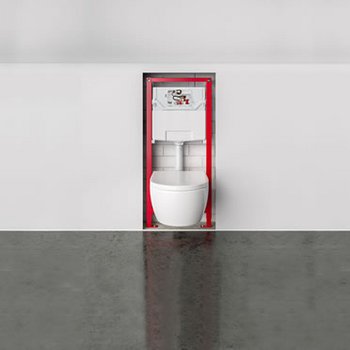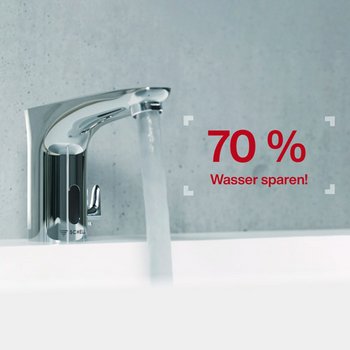Taking a break over Easter? Not for drinking water hygiene!
5-minute read
While the Easter Bunny is still busy doing his rounds, the lights are already off in many buildings – which is a recipe for the slow stagnation of water in drinking water systems over Easter. This is a critical issue for drinking water hygiene. If building operations come to a standstill over the Easter weekend – or even the entire Easter holiday – then the water in the pipes will do the same. This gives dangerous bacteria like Legionella the chance to propagate exponentially and contaminate the drinking water installation. When building operations start up again after the holidays, these bacteria can then endanger the health of building users. Accordingly, the regular and complete exchange of water across all tapping points after no more than 72 hours is a must – even over Easter. With systems from SCHELL, this is an easy job to automate.

Stagnation flushes instead of an Easter standstill
While stagnation flushes help to maintain drinking water quality, they do need to be carefully coordinated to match local conditions. Stagnation flushes can be triggered manually, although this complex task is better handled automatically by electronic fittings. For automated stagnation flushes, flow times and flush intervals can be easily set up – for the electronic wash basin tap CELIS E from SCHELL, for example. This avoids the need for error-prone, manual flushing plans – nor does anyone have to come in over Easter and open/close all of the building’s fittings by hand.

Centralised control with the SCHELL Water Management System SWS
But that’s not all when it comes to support from SCHELL. The best example of this is the Water Management System SWS , which can be used to ensure that operating a drinking water system stays both efficient and cost-effective. Stagnation flushes – whether at Easter or any other time – can be centrally programmed, managed and monitored from a PC, tablet or smartphone. Flushes can also be configured for specific groups of fittings, so as to achieve turbulent flows within the mains supply network. See this post for more information about turbulent flows. Stagnation flushes can be scheduled for individually programmed days and times of day. If additional temperature sensors have been installed, then these offer temperature-controlled flushes as well. For rarely used tapping points, this is an extremely useful and effective option for maintaining water quality throughout the building. Another benefit of SWS is the continuous logging it offers for stagnation flush operations: if required, this offers documented proof of the flushes performed to maintain specified normal operation for the drinking water installation.
SMART.SWS – always-on monitoring for drinking water installations
Anyone out of the building over Easter but still wanting to keep tabs on the system should take a look at SMART.SWS. This add-on for SWS is an online service for the digital monitoring of installations anywhere in the world. Stagnation flushes can also be adjusted here as needed – with just a few taps on a phone, for example. Keeping drinking water system standards-compliant has never been so easy or convenient. From educational establishments to public facilities or office complexes, electronic SCHELL fittings and the Water Management System SWS ensure that operators and managers of any kind of building can prepare properly for the Easter holidays – and enjoy a well-earned rest.

![[Translate to English:] [Translate to English:]](/fileadmin/_processed_/1/b/csm_symstemloesungen_e2_thumb_6bca267f26.jpg)























![[Translate to English:] [Translate to English:]](/fileadmin/user_upload/images/menu/menu_service_downloads_broschueren.jpg)








![[Translate to English:] [Translate to English:]](/fileadmin/_processed_/7/7/csm_menu_unternehmen_ueber-schell_awards_f6cec25b1d.jpg)
![[Translate to English:] [Translate to English:]](/fileadmin/_processed_/a/0/csm_menu_unternehmen_ueber-schell_wasser-sparen_41036d2dd9.jpg)





